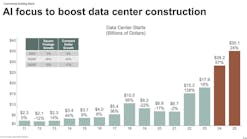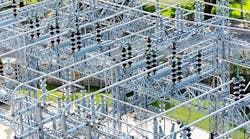As we all know, there is a major global focus right now to reduce the net amount of carbon being put into the atmosphere by human activity. But this is not a new concern and has had many names, the current one being “decarbonization.”
Despite the Madison Avenue taint of that term, its goal is of critical importance to mitigating the impacts of climate change. Since the buildings sector consumes about 40% of all energy produced[1] and produces about 40% of carbon emissions, reducing the carbon footprint of providing building services, most notably HVAC, must be a key component to mitigating climate change.
In the long-term, decarbonization requires both a substantial reduction in the use of fossil fuels and a substantial increase in electrification to maximize use of renewable resources like wind and photovoltaic generation and any other carbon-free sources. While these long-term objectives are rather clear, the path that leads to them is anything but.
Many in the building sector equate decarbonization with putting a priority on electrification of building services. In the short term, however, electrifying everything would be an unmitigated disaster.
Rapid electrification meets the grid
There are a variety of reasons that rapid electrification is problematic; the biggest reason is the electric grid—something our industry is not primarily focused on. The electric grid already teeters on the edge of collapse in many places.[2] We have witnessed or barely avoided capacity disasters all over North America—including high-profile places such as Texas[3] and California;[4] even energy-rich Alberta has had grid problems.[5] While there is plenty of finger pointing about whose fault these incidents might be, the fact remains that electric load continues to grow faster than supply—especially at peak times.[6]
So, as it is, the grid is going to be less stable over the next several years and we should be looking for ways to reduce electric loads, not increase them.
- Comments? Send feedback to [email protected].
Even if the existing grid had enough capacity to handle significantly increased loads, it is not clear that there would be a substantive impact on decarbonization through just any building electrification; a lot of electricity is generated from fossil fuels. Even in more progressive places, the fraction of renewable energy on the grid is usually low.[7] Over 60% of electricity generation comes from fossil fuels.[8] Electrification may reduce on-site carbon emissions, but will increase them at some power plant somewhere on the grid, giving the end user a false impression of success.
Miscalculating success
To understand how much net decarbonization (if any) a given building electrification option achieves requires an engineering calculation involving carbon content of primary energy sources and a whole host of efficiencies (end-use, generation, transmission and distribution).
Take for example the option of replacing a gas boiler or furnace with an electric one. Perhaps the owner thinks that is decarbonization, but is it? We know that, on average, 60% of the electricity used will be generated by fossil fuels; so, is there at least 40% carbon savings? There might be if it weren’t for the fact that a lot of energy is wasted in the conversion of the fossil fuel to electricity and the transmission and distribution of that to the building.[9] About 60% of energy consumed at a power plant is lost in conversion.[10] Applying such numbers to electric resistance heating leads to electrification being a clear lose-lose scenario.
One could consider using a heat pump, instead. The high COP of a heat pump means it would require substantially less electric power input. But it is still going to be a wash in terms of carbon emissions in many cases. However, in some, it may come out ahead. Even if so, there are still many problems:
- It further loads an unstable grid--even if it is a lesser load than electric resistance;
- Heat pumps represent an increased first cost, which much be figured into the economics;
- Heat pumps have different performance curves and may not have the same capacity when the user needs it.
If the economics work, they might be worth it. But their value to decarbonization is going to be small—or worse.
Economics and end uses
Of course, there could be economic reasons for electrification. In new construction, for instance, which is already going to be energy efficient, there may be a good justification for going all electric. After all, it eliminates gas infrastructure and heating loads are not likely to be high. Still, it is important to recognize that some end uses do not provide the same functionality when electrified.
For example, for many people and professional chefs there are significant performance differences between gas and electric cooking. System heating capacity (e.g. to recover from deep setback) may not be sufficient with an electric heating system. Recovery time in a heat-pump water heater may not be acceptable. All of these acceptability issues can be barriers to adoption of electric technologies and must not be brushed aside. We must consider them in any recommendations we make and, if truly serious about decarbonization, then the industry must focus more of its research on such matters.
The case for electrification in existing buildings is much worse.
Not only do the aforementioned issues apply, but also, the costs are much higher and the options are more limited. Very often, existing buildings do not have the necessary installed electric infrastructure and capacity to handle loads that are likely to be much higher in older construction. Electrification of older buildings is going to be a poor way to get decarbonization[11] for the foreseeable future.
Prioritize efficiency, electrify sensibly
From a public policy point of view, the highest priority is increasing the capacity and resilience of the grid while lowering its carbon emissions through renewable (or nuclear) generation. Building electrification at this stage is not ready for prime time, although for some end uses the case for electrification is a slam dunk. Much of the transportation sector, for example, could be converted from petroleum-based fuels to electricity with minimal or even positive effects on today’s grid.[12]
Policy makers can and should sort out the best ways of encouraging decarbonization with their usual array of incentive mechanisms, but that probably should not include building electrification yet.
It will surely take at least a decade for the grid to become stable and low carbon. Until that happens building electrification is little more than decarbonization theater. The industry can avoid that fate and make a substantial contribution to the profession and society by focusing its talents and resources on providing real decarbonization through what groups like AHRI and ASHRAE do best: implementing efficiency and HVAC research. Lowering demand through efficiency needs to come before electrification.[13]
The most important thing the industry can do is enable increased efficiency in providing indoor environments and other building services. Every therm of fossil fuel not burned is a bit of decarbonization directly (if as end-use) or indirectly (if at the power plant). Every kWh saved is also one more kWh available to stabilize the grid.[14]
When we stick to our knitting, the industry can be very effective as, for example, ASHRAE was with its Epidemic Task Force, or more generally, with efficiency standards for equipment or buildings. We have a more secondary role in electrification and need to take it a bit slower. We need to be ready for the time when the grid will have the low-carbon capacity to accept more building load. Getting ready for the future must be part of a research agenda—in this case for developing or adapting technologies for the time when building electrification is productive.
The time has not yet come for the building sector to make implementing building electrification a near-term priority. While there will certainly be times where it makes economic sense to go all-electric in a building or development, our current focus must be to make buildings more energy-efficient, regardless of the fuels being used. That is the best decarbonization we can now do.
The public interest in mitigating climate change is not well-served by investing public resources in implementing building electrification. It is better served by investing in building efficiency and creating a low-carbon and robust electric grid. The former is important for our industry. While investing in building electrification research will position us well for the future, implementing building electrification now is just too fast and too furious.
About the author
Max Sherman is a retired Senior Staff Scientist at the University of California’s Lawrence Berkeley National Laboratory where for over 30 years he ran a research group investing in energy and indoor climate issues in buildings. He has published over 200 papers and has been the U.S. representative to various projects with the International Energy Agency. Sherman is an Honorary Professor at the University of Nottingham where he continues to research indoor air quality. An ASHRAE Distinguished Fellow and Exceptional Service Awardee, he is currently principal of the EPB Consulting Group. Contact him at [email protected].
Footnotes
[1] https://www.eia.gov/tools/faqs/faq.php?id=86&t=1
[2] https://www.cnn.com/2022/05/31/us/power-outages-electric-grid-climate-change
[3] https://www.texasmonthly.com/news-politics/texas-electric-grid-failure-warm-up/
[4] https://www.newsweek.com/california-heat-wave-power-grid-tracker-blackouts-1740508#:~:text=The%20available%20capacity%20for%20the%20state%20is%20about%2051%2C000%20megawatts.
[5] https://globalnews.ca/news/9160969/alberta-grid-alert-electricity-aeso-september/
[6] On-site electric storage can help, of course, but at a price and efficiency loss.
[7] California is at approximately 1/3 renewable power.
[8] https://www.eia.gov/tools/faqs/faq.php?id=427&t=3
[9] The situation is even worse that that because when one is considering taking an action, it is the marginal generation (i.e. the next kWh generated or the first one saved) that is important and that is almost always from natural gas as renewable and baseload power is used up first.
[10] https://www.eia.gov/todayinenergy/detail.php?id=44436
[11] An exception could be when a “deep energy retrofit” is already taking place and the building is essentially being built anew.
[12] https://www.forbes.com/sites/bradtempleton/2022/09/12/evs-wont-overload-the-power-grid-in-fact-evs-and-ice-are-its-salvation/?sh=2e36e35049c5
[13] https://www.ashrae.org/file%20library/about/position%20documents/pd_buildingdecarbonization_2022.pdf
[14] The issue of utility load shapes and electric power storage is a complicated and beyond the current discussion. It is also possible that using existing gas infrastructure to distribute hydrogen or synthetic natural gas to fuel appliances as an intermediate solution.









